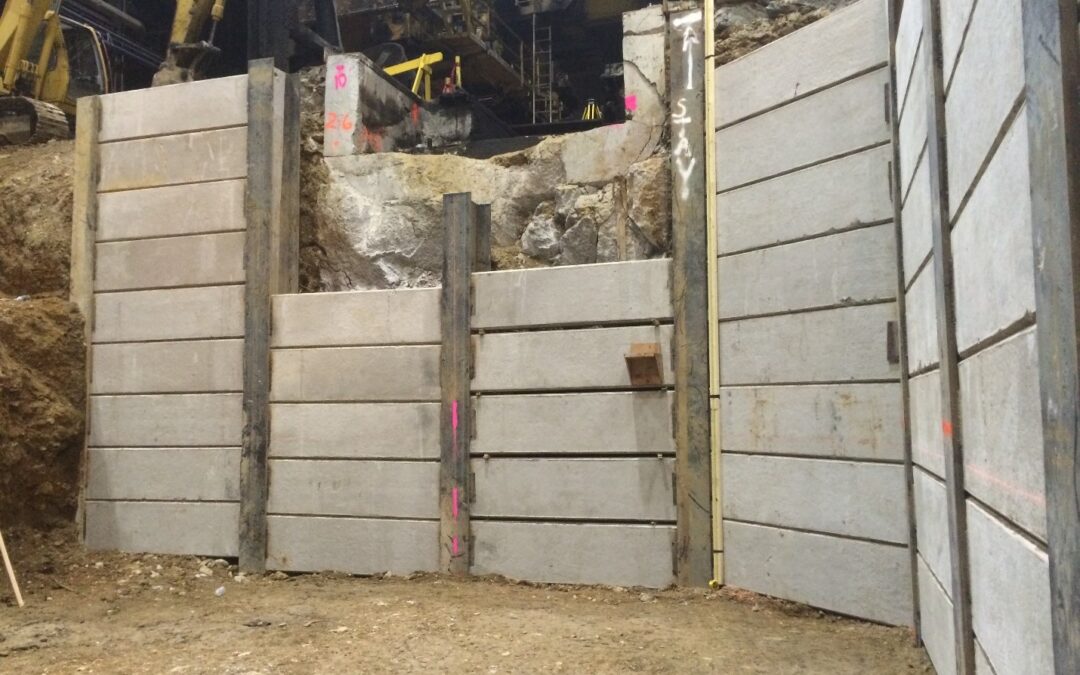In the realm of civil engineering, the quest for efficient and robust solutions to earth retention challenges has led to the development and widespread use of various retaining wall systems. Among these, soldier pile retaining walls stand out as stalwart structures. Offering a versatile and effective means of supporting vertical or near-vertical grade changes.
Overview of Soldier Pile Retaining Walls:
Soldier pile retaining wall, also known as soldier beam walls, are a type of earth retention system that consists of vertical steel piles, typically H-shaped, spaced at regular intervals along the wall’s length. These steel piles are known as soldier piles. Serve as the primary structural element of the wall, providing vertical support to resist lateral soil pressure. The space between the soldier piles is filled with lagging, which can be composed of timber, steel, or reinforced concrete panels, forming a cohesive wall structure.
Construction Process:
The construction of a soldier pile retaining wall typically involves the following key steps:
- Installation of Soldier Piles:
- Vertical steel piles are driven or drilled into the ground at predetermined intervals along the proposed wall alignment.
- The spacing between soldier piles is determined by factors such as soil conditions, wall height, and design requirements.
- Lagging Installation:
- Lagging materials, which can include timber, steel, or reinforced concrete panels, are installed horizontally between the soldier piles.
- Lagging provides lateral support and helps distribute soil pressure along the length of the wall.
- Tiebacks or Ground Anchors (if required):
- In some cases, tiebacks or ground anchors may employed to provide additional lateral support. These elements extend from the soldier piles into the soil, enhancing the overall stability of the wall.
- Final Wall Facing:
- The exposed face of the soldier pile retaining wall may finished with a variety of materials. Such as shotcrete or masonry, to enhance aesthetics and protect against weathering.
Advantages of Soldier Pile Retaining Wall:
- Versatility:
- Soldier pile retaining walls are versatile and can adapted to various site conditions, making them suitable for a wide range of applications, including urban development, highway construction, and waterfront projects.
- Cost-Effective:
- The use of standardized components, such as steel soldier piles, can contribute to cost-effectiveness in both materials and construction.
- Rapid Construction:
- Soldier pile retaining walls can constructed relatively quickly, making them a favorable option when time is of the essence.
- Adaptable to Sloping Sites:
- These walls are particularly effective in stabilizing slopes and managing changes in elevation, providing a solution for sites with challenging topography.
- Minimal Site Impact:
- The construction process of soldier pile retaining walls typically results in minimal disruption to the surrounding environment. Making them a suitable choice for projects in sensitive areas.
Challenges and Considerations:
While soldier piles retaining walls offer numerous advantages. Certain challenges and considerations should taken into account during their design and construction. Site-specific factors, such as soil conditions, groundwater levels, and seismic activity. Must be thoroughly evaluated to ensure the wall’s stability and longevity.
In conclusion
Soldier pile retaining walls have emerged as stalwart solutions in civil engineering, addressing the complex challenges associated with earth retention. Their versatility, cost-effectiveness, and adaptability make them a preferred choice for engineers and developers seeking efficient and reliable solutions in a variety of construction scenarios. As the field of civil engineering continues to evolve, soldier pile retaining walls remain a steadfast option in the engineer’s toolkit. Contributing to the sustainable and resilient development of infrastructure around the globe.

